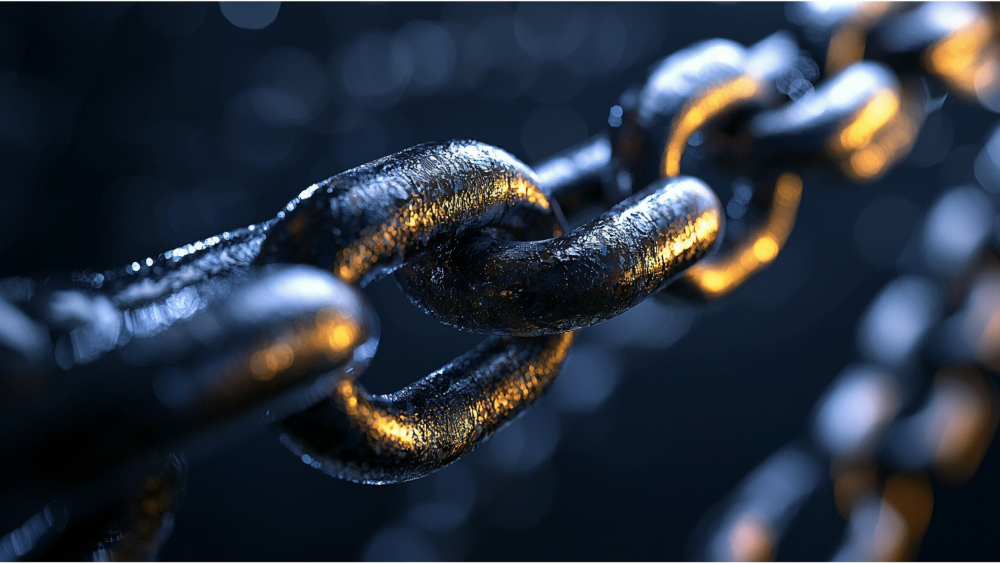Internal linking is an important aspect of search engine optimization (SEO). By linking pages within a website, internal links help to establish the structure and hierarchy of a website for both users and search engines. In addition to this, internal links also play a role in distributing link equity or PageRank throughout a website.
But how many links should you have on each page or blog post? Is there a specific number that is considered optimal for SEO? In this article, we will discuss the recommended practices for internal linking and how it can impact your website’s SEO.
The Importance of Internal Links

Before diving into the ideal number of internal links per page, let’s first understand why internal linking is crucial for SEO. Here are some key benefits of internal links:
Improved website navigation:
Internal links significantly enhance the user experience by creating a roadmap for visitors to follow, guiding them to related content and deeper sections of a website. This ease of navigation helps users find the information they are looking for quickly and efficiently, reducing bounce rates and increasing the likelihood that they will stay on the site longer.
Effective internal linking ensures that valuable content is not buried deep within the site and is easily accessible, thereby improving usability and user satisfaction.
Better user experience:
Internal links also contribute to a better user experience by providing contextual relevance and additional resources. For instance, by linking to related articles or services, you can help users gain a more comprehensive understanding of a topic without having to search for the information themselves.
This not only keeps users engaged but also helps establish your website as a valuable resource. Moreover, effective internal linking can help reduce the number of orphan pages—pages that are not linked to anywhere else on the site—and improve the overall architecture of your website, making it easier for both users and search engines to navigate.
Enhanced crawl ability and indexing:
Internal links also play a pivotal role in helping search engines crawl and index a website more effectively. Search engine bots use internal links to discover and navigate through the pages of a website, enabling them to index new content and understand the overall site structure.
By strategically placing internal links, webmasters can ensure that all important pages are easily reachable by search engines, which can lead to better indexing and potentially higher search rankings. This enhanced crawlability is essential for improving the visibility and discoverability of content within search engine results pages (SERPs).
Improved ranking potential:
Internal links can also significantly improve the ranking potential of a website by distributing link equity, also known as PageRank, across various pages. When a high-authority page on your site links to other pages, some of its authority is passed on, thereby boosting the linked pages’ perceived importance and relevance in the eyes of search engines.
This process helps in elevating the rankings of individual pages, particularly those that might otherwise struggle to gain visibility on their own. By strategically using internal links to highlight key pages and content, you can better leverage the existing authority of your site to enhance overall SEO performance.
Recommended Practices for Internal Linking

Now that we understand why internal linking is important, let’s discuss the recommended practices for internal linking:
Use descriptive anchor text:
When implementing internal links, using descriptive anchor text is crucial. Anchor text, the clickable text in a hyperlink, should be relevant and accurately describe the content of the linked page. Avoid using generic terms like “click here” or “read more.” Instead, use specific and keyword-rich phrases that provide context to both users and search engines about the destination page.
This practice not only improves the user experience by clearly indicating what to expect on the linked page but also enhances SEO by signaling to search engines the relevance and topic of the content being linked to.
Link to relevant and related content:
Linking to relevant and related content is essential for creating a coherent and valuable internal linking strategy. When you add internal links to pages that are contextually related, you provide users with a seamless journey through your website, allowing them to explore topics in greater depth.
This not only enhances the user’s experience but also signals to search engines the relationships between different pieces of content. Moreover, linking to related content can help distribute authority and ranking potential more evenly across your site, ensuring that less prominent pages still benefit from the overall SEO strength of your website.
Avoid excessive linking:
Excessive internal linking can be counterproductive and may dilute the value of each link. When a page contains too many internal links, it can overwhelm users and make it difficult for them to discern which internal links are most relevant to their needs. This practice can also negatively impact the user experience, causing frustration and potentially leading to higher bounce rates.
From an SEO perspective, search engines may struggle to prioritize which links to follow and index, potentially diminishing the effectiveness of your internal linking strategy. Therefore, it is important to maintain a balance by ensuring that each page contains a reasonable number of internal links, ideally focusing on the most pertinent and valuable connections. Also, you can incorporate nofollow links so that search engines know to ignore them when indexing.
Diversify anchor text:
Diversifying anchor text is another essential practice for a robust internal linking strategy. By using a variety of anchor texts that include different keywords and phrases, you can help search engines better understand the content of your linked pages within different contexts. This approach can enhance the relevancy and visibility of those pages in search results, as it prevents over-optimization and avoids creating a pattern that could be deemed unnatural by search algorithms.
Furthermore, varied anchor texts make the user experience more engaging and informative, as users are provided with more descriptive and contextually rich internal links to follow.
How Many Internal Links Per Page?

At Kova, we have established a standard guideline to ensure the optimal effectiveness of internal linking within our website structure. While the general recommendation in the SEO community is to include around 3-5 internal links per page, at Kova, we adhere to a consistent practice of using 5 or more internal links per page. This approach strikes a balance between providing sufficient navigational pathways for users and ensuring that each internal link carries enough value without appearing excessive or spammy.
Our decision to standardize at 5 internal links per page is grounded in both research and practical experience. By carefully selecting and positioning these navigational links, we ensure that our users have access to the most relevant and complementary content. Each internal link pointing to another page serves a purpose in guiding users through our site, enhancing their experience by connecting them to valuable information and keeping them engaged for longer periods. This practice not only benefits our users but also facilitates the efficient crawlability and indexing of our pages by search engine algorithms.
Furthermore, at Kova, we emphasize the quality and relevance of anchor text linked to our chosen pages. By maintaining a diverse and descriptive range of anchor texts, we help both users and search engines understand the context and relevance of the links. This results in a natural internal link profile that supports our overall SEO strategy and helps us to achieve better ranking potential across our entire website. Through these diligent internal linking practices, we continuously optimize our website’s structure and performance, ensuring a superior user experience and robust search engine visibility.
SEO With Kova
At Kova, our commitment to excellence in SEO is unwavering, making us the best choice for optimizing your website’s search engine performance. Our proven strategies, which include meticulous internal linking practices, advanced keyword research, and comprehensive site audits, ensure that your website not only ranks higher but also delivers an outstanding user experience.
Our expert team stays ahead of the latest SEO trends and algorithm updates, allowing us to implement cutting-edge techniques that yield measurable results. Ready to elevate your SEO game? Partner with Kova today and see the difference firsthand.
Contact us now for a personalized consultation and start unlocking your website’s full potential.
Frequently Asked How Many Internal Links Per Page SEO Questions

How does internal linking help with SEO?
Internal linking is a crucial aspect of SEO as it helps search engines understand the structure and hierarchy of your website. When you link to other pages within your site, search engines follow these internal and external links with search engine crawlers and index the connected pages. This process not only helps in indexing but also distributes page authority across your site, potentially boosting the ranking of individual pages. Effective internal linking ensures that search engines can easily navigate your site, thereby improving overall site visibility and ranking. This can be made easier with website plugins such as Internal Link Juicer.
Moreover, it enhances the user experience by guiding visitors to relevant and related content, which can keep them engaged longer and reduce bounce rates.
What are the best practices for creating effective anchor text?
Creating effective anchor text means using keyword-rich phrases that provide context about the linked page. Avoid using generic terms such as “click here” or “read more” as they offer little information about the destination page. Instead, incorporate specific keywords relevant to the content of the linked page.
Diversifying anchor text is also crucial; using a variety of phrases helps avoid over-optimization and makes your content more natural for both users and search engines. Additionally, ensure that the anchor text seamlessly blends with the surrounding content to maintain a natural reading flow.
Why is it important to avoid excessive internal linking?
While internal linking is beneficial, excessive linking can be counterproductive. When a page is overloaded with internal links pointing to other pages, it can create a cluttered and overwhelming experience for users, making it difficult to determine which contextual links are most relevant.
From an SEO perspective, too many internal links can dilute the value of each link, and search engines may struggle to prioritize which ones to follow and index. To maintain a balanced internal linking strategy, focus on a reasonable number of links per page, ensuring each one is pertinent and valuable to both users and search engines.
How many internal links should each page contain for optimal SEO results?
At Kova, we adhere to a guideline of including 5 internal links per page, although the general recommendation within the SEO community ranges from 3-5 links. This balanced approach ensures that each link carries sufficient value and avoids appearing spammy.
By carefully selecting relevant and complementary links, we enhance user navigation and engagement while facilitating efficient search engine crawling and indexing. This strategy not only benefits users by connecting them to valuable information but also supports the overall SEO strength of our website.
What role does anchor text diversity play in an SEO strategy?
Anchor text diversity is essential for a robust SEO strategy because it helps search engines understand the varied contexts in which linked pages fit. Using a variety of anchor texts with different keywords and phrases prevents over-optimization and unnatural linking patterns, which search algorithms may penalize.
Diverse anchor texts also provide a richer and more engaging user experience, as they offer descriptive and contextually relevant internal links. This practice enhances the visibility and relevancy of linked pages in search results, ultimately contributing to a more successful SEO strategy.
How can Kova help optimize my website’s SEO performance?
At Kova, we offer comprehensive SEO services designed to optimize your website’s search engine performance. Our strategies include detailed internal linking practices, advanced keyword research, and thorough site audits to ensure that your website ranks higher and delivers an outstanding user experience.
Our expert team stays abreast of the latest SEO trends and algorithm updates, allowing us to implement the most effective techniques for measurable results. We focus on creating a superior user experience while improving search engine visibility. Partner with Kova today for a personalized consultation and take the first step towards unlocking your website’s full potential.
Conclusion
In conclusion, optimizing your website’s SEO performance is integral to achieving higher rankings and providing an exceptional user experience. At Kova, our dedication to excellence and innovative strategies ensures your site stands out in the competitive digital landscape. From effective internal linking and keyword-rich anchor texts to comprehensive site audits, we cover every aspect of SEO with precision and expertise.
Ready to take your website to the next level? Partner with Kova today and experience the difference firsthand. Contact us now for a personalized consultation and start unlocking your website’s full potential. Don’t wait—let’s elevate your SEO game together!

